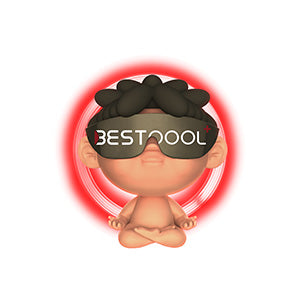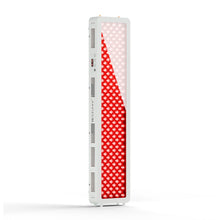Summer travel can be thrilling, but changing time zones often throws your body into confusion. Jet lag can cause poor sleep, low energy, and mental fog. Red light therapy (RLT) offers a natural way to help your body adjust faster.
Here’s a complete guide on how to use RLT before, during, and after your summer trips to help you feel more like yourself when you land. Whether you’re a frequent flyer or heading off for a long-awaited vacation, having a plan can make all the difference.
Why Jet Lag Gets Worse in Summer
If you've ever felt completely drained after a long summer flight, you're not alone. Jet lag tends to hit harder during the warmer months because your body's natural cues are already influenced by longer daylight hours and late sunsets. Add travel into the mix, and your internal clock can get completely thrown off.
Key Triggers:
- Crossing multiple time zones
- Exposure to bright light late into the evening
- Irregular sleep due to vacation activities
- Long-haul flights with limited rest
How It Affects You:
- Trouble falling asleep
- Waking up too early or too late
- Low energy during the day
- Headaches and mood swings
By understanding these unique summer challenges, you can better prepare your body—and your mind—to bounce back faster with the help of red light therapy.

Red Light Therapy: The Science of Circadian Support
When your internal clock falls out of sync, the result is jet lag. But red light therapy offers a natural and non-invasive way to support your body in getting back on track. Instead of relying on caffeine or sleeping pills, RLT gently works with your biology to promote restful sleep and help you feel better, faster.
What It Does:
- Supports Melatonin Production: RLT helps increase melatonin, the hormone responsible for sleep.
- Aligns the Body Clock: When used at the right time, it sends signals to your brain that support time zone transitions.
- Calms the Nervous System: The warm light helps your body wind down without overstimulation.
Best Time to Use RLT for Jet Lag:
- In the evening at your destination
- Before your new bedtime, to help induce sleep
By supporting melatonin and calming your nervous system, red light therapy becomes a valuable tool in your travel recovery toolkit, especially when used consistently and at the right times.
Pre-Flight: How to Prepare with RLT
One of the smartest things you can do before a long-haul trip is get ahead of your body’s adjustment process. Pre-travel red light therapy helps prime your sleep-wake cycle so your body begins shifting even before you board the plane.
Preparation Steps:
- Start sessions in the evening if flying east.
- Use 10–15 minutes of RLT once or twice daily.
- Pair with natural morning light to shift your internal clock.
Tip: Begin adjusting your sleep schedule alongside RLT to build momentum.
By easing into your new time zone days ahead of travel, you reduce the intensity of jet lag symptoms and give yourself a stronger start at your destination.
Choosing the Best RLT Device for Travel
Not all red light therapy devices are travel-ready. When you're heading out on a summer trip, you want something lightweight, compact, and easy to use—without sacrificing the quality of your treatment. A good portable option makes it easy to stick with your routine, whether you’re in a hotel room, at a rest stop, or catching a quick session between flights.

Look for a device that checks the following boxes:
| Feature | Why It Matters |
| Compact Size | Takes up minimal space in your luggage and is easy to carry. |
| Wavelength Range | Effective red and near-infrared light (630–850nm) for jet lag and wellness support. |
| Stable Base or Stand | Makes setup simple—use it on a desk, bedside table, or wherever you are. |
| Digital Controller | Let you choose the light and adjust the timing. |
Popular Travel Devices Include:
- Portable red light panels
- Foldable therapy wands
- Wearable bands or masks
With the right portable device, red light therapy becomes a convenient companion that fits easily into your summer travel routine without disrupting your packing list.
Mid-Trip: Using RLT in Flight and Transit
Once your trip is underway, it’s important to stay consistent with your light exposure routine. Even short RLT sessions during flights or layovers can support your body’s natural efforts to stay aligned with your destination's time zone.
- On Red-Eye Flights: Use RLT about 1–2 hours before your destination's bedtime.
- During Layovers: Take a 10-minute RLT break between flights if possible.
- Stay Discreet: Use compact devices with dim settings to avoid disturbing others.
Extra Tip: Avoid blue light exposure right before sleep. Use RLT instead to gently transition to rest.
Maintaining your rhythm while in transit can soften the shock of arrival, allowing you to start your trip with better energy and fewer disruptions.
After You Land: A Simple Reset Routine
Once you land, it’s go-time for getting your body in sync with the new time zone. The first few days are your adjustment window, and a little structure goes a long way. Red light therapy can help your body ease into the new rhythm, especially if you pair it with sunlight and a few smart habits.
Day 1–3 After Arrival:
- Evening: Do a 15–20 minute RLT session about two hours before you want to go to bed. It signals your body that it’s time to wind down.
- Morning: Step outside and soak up some natural light for at least 15–30 minutes. Sunlight in the morning tells your brain it’s time to be awake.
- Try to avoid: Too much caffeine after lunch or long naps—they can throw off your sleep even more.
Day 4–6:
- Keep using RLT each evening to stay on track, especially if you're still waking up too early or feeling off.
- Stick to a steady wake-up time, even if you’re a bit tired. Getting up at the same time helps lock in your new routine.
With just a bit of planning—and your RLT device—you can get over jet lag faster and feel more like yourself in your new surroundings.
Full-Body Benefits: RLT Beyond Jet Lag
Red light therapy isn’t just about beating jet lag. It’s also a handy tool for staying relaxed, clear-headed, and physically comfortable while you travel. Whether you’re stiff from a long flight or just wiped out after a busy day, RLT can give your body the boost it needs.
- Muscle recovery: Use RLT on tight spots like your neck, shoulders, or legs after a flight or long walk. It helps your body bounce back quicker.
- Mental clarity: A quick midday session can help shake off grogginess and get your brain firing again, especially useful if you’ve got an afternoon tour or meeting.
- Stress relief: Travel can be exciting, but it can also be stressful. RLT helps calm your system and take the edge off, so you feel more grounded and ready to enjoy the day.
Think of it as your on-the-go wellness habit—simple, flexible, and surprisingly helpful for staying at your best through the ups and downs of travel.
Your Summer RLT Plan in Action
If you're serious about reducing jet lag and staying energized during travel, it's not just about using red light therapy—it's about using it at the right time. The benefits of RLT build over time, so having a structured plan can make a real difference in how quickly you adjust. Whether you're taking a red-eye across the country or heading overseas, this simple schedule can help you stay in sync.
| Phase | Timing | Duration | Goal |
| Pre-Travel | 3–5 days before flight | 10–15 min daily | Start adjusting your body clock |
| In-Transit | On flights or layovers | 10–20 min | Maintain circadian transition |
| Post-Arrival | 3–5 days post-flight | 15–20 min nightly | Reset to local time |
Pro Tips:
- Drink water often
- Limit screen time before bed
- Stay consistent with sessions for the best results
This flexible routine is easy to follow and doesn’t require much gear or time. By sticking to it consistently, you give your body the rhythm it needs to adapt quickly, so you can spend less time feeling off and more time enjoying your destination.
Make RLT Part of Your Travel Routine
Travel doesn’t have to leave you drained. With red light therapy, you give your body a practical, low-effort way to adjust faster, sleep better, and stay more energized on the go. Whether you’re planning a vacation or business trip, adding RLT to your routine can help you arrive feeling like yourself. With the right timing and a travel-friendly device, you’ll be set to enjoy your destination from day one.













 Small
Small

 Moderate
Moderate

 Moderate
Moderate

 Moderate
Moderate

 Full
Full



